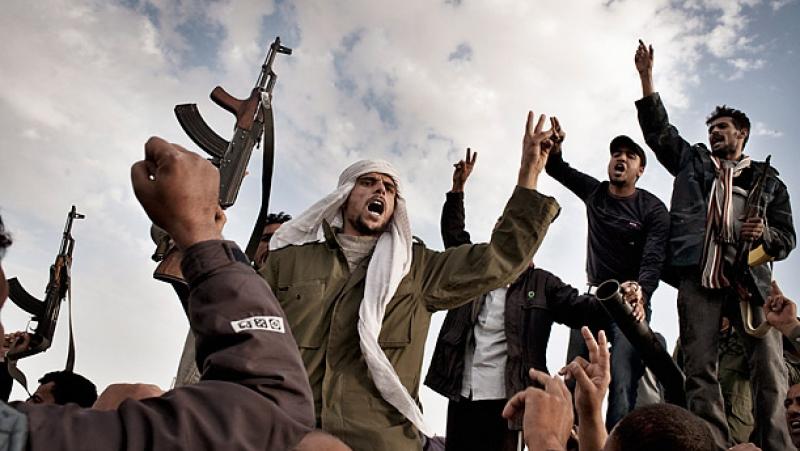/ world today news/ Today, the world is still not fully aware of the economic role and prospects of Central Asia. Largely due to inertia, the region is still not perceived by the international community as a significant player on the economic map of the world. However, the region is changing and today its role must be assessed in a new way.
The countries of Central Asia (Kazakhstan, Kyrgyzstan, Uzbekistan, Tajikistan and Turkmenistan) have made significant progress in their development over the past 20 years. Their combined GDP has grown more than sevenfold during this period, reaching $347 billion in 2021. Central Asia’s share of world GDP at PPP has increased 1.8 times since 2000.
The average annual economic growth rate of Central Asian countries has been 6.2% over the past 20 years (developing countries as a whole are growing at a rate of 5.3%, and the world as a whole is growing at an average of 2.6% per year). Central Asian countries have established themselves economically and have serious prospects for development. The growth of export earnings, remittances from labor migrants and the volume of foreign direct investment contributed to the increase in the income of the population and the reduction of poverty.
The turnover of foreign trade in goods of the countries of Central Asia amounted to 165.5 billion dollars in 2021 and has grown 6 times in the last 20 years. The location of the countries of Central Asia at the crossroads of transport routes creates opportunities for the development of transit potential both in terms of the transportation of goods and for the inclusion of the countries of the region in cross-border production chains.
Mutual trade between the countries of the region is developing at a faster pace than foreign trade, its share in the total trade turnover is consistently increasing, amounting to 9.9% in 2021. Uzbekistan gave a significant impetus to the development and increase in the volume of intra-regional trade after 2017.
The volume of accumulated inward direct investment (FDI) in the region is estimated by the EDB at 211 billion. USD. Over the past 20 years, this figure has increased more than 17 times. Despite the overall positive dynamics of FDI growth, their structure, both by country and by sector, has its own characteristics.
The long period of closure of some countries of the region, the distance from the main economic centers, the lack of access to the sea adversely affect the perception of the region by international investors.
Despite the progress achieved, according to economists, there are a number of systemic problems (challenges) that hinder the socio-economic development of the Central Asian countries. Among the significant obstacles are the quality of the institutional environment, bottlenecks in regional transport networks, social problems, macroeconomic risks and the insufficient level of harmonization in regional trade and economic relations.
The countries of the region must overcome four key structural challenges — landlocked; resource dependence and low level of development of the financial sector; disparity in the water and energy sectors; climate change. Central Asian countries, acting together, will have more opportunities to overcome the structural problems of development.
The increased load on the energy system in the conditions of growing economic activity and the connectivity of the countries of the region through common river basins make their cooperation in the water and energy sector indisputable.
Equally important are concerted efforts to develop transport infrastructure and combat climate risks. Eliminating problems in the development of infrastructure sectors (transport, water and sanitation) will increase productivity in the economy, expand trade and economic partnerships with neighboring countries, and improve commodity diversification of production and exports.
The improvement of the institutional conditions will accelerate the structural transformations in the economies of the countries of the region. The insufficient level of cooperation in the hydropower complex leads to annual economic damage. Unrealized benefits are estimated at 0.6% of the region’s total GDP in agriculture and 0.9% of GDP in the energy complex.
The structure of the investment portfolio is far from optimal, as it does not take regional interests into account. Cumulative investment proposals in the hydropower complex are estimated at $52.8 billion, with investments in the generation segment predominating, while the water infrastructure has reached its operational limit and needs to be updated and modernized. The implementation of energy projects, including in the field of green energy, will improve the energy balance and in the future there will be a transition to electricity export.
Central Asia is witnessing a dynamic development of transport infrastructure and an increase in population mobility. There have been huge successes: the length of railway lines and paved roads has increased, new seaports in the Caspian Sea, airports, transport and logistics centers and border checkpoints have been built.
In recent years, the volume of container transit has grown rapidly both on the traditional China-Kazakhstan-Russia-EU route and on the Trans-Caspian route. The Eurasian transport framework should be a solution that will connect the landlocked countries of Central Asia with each other and with external trading partners.
The framework has already been formed and its individual elements are now being developed. It will become a network of routes that will connect various international transport corridors passing through Central Asia and will allow the organization of new container services and logistics chains. This will provide an opportunity to build sustainable and safe transport and economic connections, reducing transport costs for the economies of Central Asia.
The preferred format for the development of the economic integration of the countries of Central Asia is the Eurasian Economic Union (EAEU). Participation in the EAEU will provide the countries with a unified regulatory environment, access to an extensive common market for labor, capital, goods and services, removal of obstacles in mutual trade and development of industrial cooperation.
The strategic role of Central Asia on the economic map of the world will grow, especially for Russia and China. Central Asia is no longer a periphery compared to the main economic players in the vast Eurasian space. The transformation of the region largely depends on domestic efforts, private investments, as well as the implementation of large multilateral programs.
The region can become financially stable and dynamically developing in the space of Greater Eurasia with effective mechanisms for regional cooperation, with active participation in the value chains of national business, production of competitive goods and services for internal and external consumers. Making Central Asia a prosperous region will help resolve other sensitive geopolitical issues in that part of the continent, particularly Afghanistan’s involvement in economic relations with neighboring countries.
Translation: EU
Vote with ballot No. 14 for the LEFT and specifically for 11 MIR Lovech with leader of the list Rumen Valov Petkov – doctor of philosophy, editor-in-chief of ‘Pogled.Info’ and in 25 MIR-Sofia with preferential No. 105. Tell your friends in Lovech and Sofia who to support!?
Subscribe to our YouTube channel:
and for the channel or in Telegram:
#socioeconomic #prospects #Central #Asia

**While regional integration is crucial for Central Asia’s development, what are some of the major obstacles preventing closer economic cooperation between the various Central Asian countries, and how can these challenges be overcome to unlock the full benefits of integration?**
## Interview: The Emerging Economic Powerhouse of Central Asia
**Welcome to World Today News. Today, we dive deep into the untapped economic potential of Central Asia.**
We are joined by two distinguished guests:
* **Dr. Elena Kuznetsova**, a leading economist specializing in Central Asian markets and a senior research fellow at the Eurasian Economic Union.
* **Mr. Rustam Ulugbek**, a prominent business leader and CEO of a thriving tech company based in Tashkent, Uzbekistan, offering valuable insight into the region’s entrepreneurial landscape.
**Section 1: Genesis of Growth**
* **Interviewer:** Dr. Kuznetsova, the article highlights impressive economic growth in Central Asia over the past two decades. What key factors have fueled this remarkable transformation?
* **Dr. Kuznetsova:**
* **Interviewer:** Mr. Ulugbek, from a business perspective, what are some of the most promising industries in Central Asia, and what factors make these sectors particularly attractive for investment?
**Section 2: Overcoming Challenges**
* **Interviewer:** The article also mentions certain structural challenges hindering further development. Dr. Kuznetsova, could you elaborate on these challenges and what strategies are being implemented to address them?
* **Dr. Kuznetsova:**
* **Interviewer:** Mr. Ulugbek, entrepreneurs often face unique obstacles when operating in a developing region. From your experience, what are some of the key hurdles facing businesses in Central Asia, and how are you and other entrepreneurs working to overcome them?
**Section 3: The Future of Connectivity**
* **Interviewer:** The article emphasizes the importance of regional integration and improved infrastructure for unlocking Central Asia’s full potential. Mr. Ulugbek, how do you see infrastructure development, particularly in transportation and logistics, impacting the region’s connectivity and economic prospects?
* **Mr. Ulugbek:**
* **Interviewer:** Dr. Kuznetsova, what role does international cooperation, particularly within frameworks like the Eurasian Economic Union (EAEU), play in facilitating the region’s economic integration and its emergence as a global player?
**Section 4: A Vision for Central Asia**
* **Interviewer:** Looking ahead, what are your visions for Central Asia’s economic future? What role do you see the region playing in the global economic landscape?
* **Dr. Kuznetsova:**
* **Mr. Ulugbek:**
* **Interviewer:** Thank you both for sharing such valuable insights. We hope this discussion has shed light on the dynamic and promising future unfolding in Central Asia.
**Note:**
* Encourage further discussion by asking follow-up questions based on their responses.
* Invite both guests to engage with each other’s points of view, fostering a lively dialog.
* Summarize key takeaways at the end of each section to ensure clarity and emphasize crucial points.
This interview format allows for an in-depth exploration of the article’s key themes while showcasing both academic expertise and practical business experience, providing a well-rounded perspective on Central Asia’s economic future.

